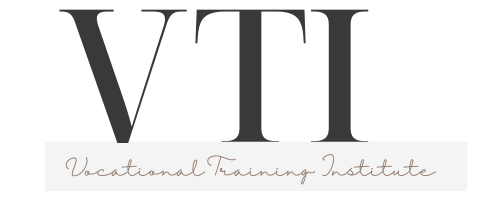Did you know that vocational training has the potential to significantly reduce unemployment rates?
With specialized programs and hands-on learning, individuals like you can gain the skills needed to secure meaningful employment.
By bridging the gap between education and the workforce, vocational training equips you with the practical knowledge and experience sought after by employers.
This article explores the role of vocational training in addressing high unemployment rates and how it can empower individuals for successful career transitions.
Key Takeaways
- Vocational training enhances employability and provides individuals with the opportunity to acquire new skills.
- By bridging the gap between the skills individuals possess and the skills required by employers, vocational training increases employability rates and opportunities for career advancement.
- Vocational training meets the demands of the job market by focusing on industries with high demand for skilled workers, reducing unemployment rates, and addressing shortages of skilled workers.
- Vocational training plays a crucial role in career transitions by offering career counseling, skill development, job placement assistance, and support in navigating the job market for successful transitions.
The Importance of Skills Development Programs
You should consider enrolling in skills development programs to enhance your employability. Skills acquisition is critical in today’s rapidly changing workforce. The demand for specific skill sets is constantly evolving, and to remain competitive in the job market, it’s essential to continuously improve and update your skills.
Skills development programs play a crucial role in workforce development. These programs provide individuals with the opportunity to acquire new skills or enhance existing ones, enabling them to meet the demands of today’s employers. By participating in these programs, you can gain the necessary knowledge and expertise that employers are seeking.
Workforce development is a multifaceted process that involves equipping individuals with the skills they need to succeed in the job market. Skills development programs are designed to bridge the gap between the skills individuals possess and the skills required by employers. These programs offer training in various areas, such as technology, communication, problem-solving, and teamwork.
Research has shown that individuals who engage in skills development programs have higher employability rates. They’re more likely to secure employment and have greater opportunities for career advancement. By investing in your skills development, you’re investing in your future success in the workforce.
Bridging the Gap Between Education and Employment
By participating in vocational training programs, you can bridge the gap between your education and employment. One of the challenges many individuals face after completing their education is the lack of practical skills required for the job market. Traditional educational institutions often focus on theoretical knowledge, neglecting the practical aspects of a profession. This is where vocational education plays a crucial role in connecting education and employment.
Vocational training programs are designed to provide individuals with the specific skills and knowledge needed for a particular job or industry. These programs offer hands-on training and practical experience, allowing individuals to develop the necessary skills that employers are looking for. By acquiring these skills, you enhance your employability and increase your chances of finding meaningful employment.
Furthermore, vocational education often includes internships or apprenticeships, providing individuals with real-world experience and industry connections. This connection to the workforce can be invaluable when seeking employment, as it gives you a competitive edge over other candidates. Employers are more likely to hire individuals who’ve already demonstrated their ability to perform the required tasks.
Addressing High Unemployment Rates Through Vocational Training
Vocational training programs offer a practical solution to address high unemployment rates. These programs are designed to equip individuals with the specific skills needed in the job market, effectively bridging the gap between education and employment.
Here are three key ways vocational training can help address high unemployment rates:
-
Meeting job market demand: Vocational training programs focus on providing training in industries that have a high demand for skilled workers. By aligning the training with the needs of the job market, these programs ensure that individuals are equipped with the skills that make them highly employable.
-
Increasing employability: The impact of vocational training on employability is significant. Participants gain hands-on experience and practical skills that make them attractive to employers. They’re better prepared to enter the workforce and contribute immediately, reducing the time spent searching for a job.
-
Closing the skills gap: High unemployment rates often stem from a mismatch between the skills individuals possess and the skills demanded by employers. Vocational training programs focus on closing this skills gap by providing targeted and industry-specific training. This helps individuals acquire the skills that are in demand, increasing their chances of finding employment.
How Vocational Training Can Boost Job Opportunities
Vocational training can significantly boost job opportunities by equipping individuals with the skills necessary for employment.
Through practical job training, individuals can gain hands-on experience and develop the expertise required for various industries.
Moreover, vocational training programs help to bridge the skills gap by providing specialized training that aligns with the needs of employers, increasing the chances of finding employment in high-demand fields.
Skills for Employment
Developing the right set of skills through vocational training can significantly enhance your employability and open up numerous job opportunities. In today’s competitive job market, having specific skills and knowledge is essential for securing employment. Vocational training programs focus on providing practical and industry-specific skills that are in demand in the workforce.
Here are three key ways in which vocational training can boost job opportunities:
-
Specialized Skills: Vocational training equips individuals with specialized skills that are directly applicable to specific industries or occupations. This targeted training enables individuals to meet the specific needs of employers, making them more attractive candidates in the job market.
-
Work Experience: Many vocational training programs incorporate internships or work placements, allowing participants to gain hands-on experience in their chosen field. This practical experience not only enhances their skills but also provides them with real-world examples to showcase to potential employers.
-
Industry Connections: Vocational training often involves partnerships with local businesses and industries. This collaboration facilitates networking opportunities and exposes participants to potential employers, increasing their chances of finding employment.
Practical Job Training
You can gain practical job training through vocational programs, and this can significantly boost your job opportunities. Vocational training offers hands-on learning experiences that focus on developing specific trade skills. This type of training equips individuals with the practical knowledge and expertise needed to excel in their chosen field. By participating in vocational programs, you can acquire the necessary skills to meet the demands of the job market and increase your chances of securing employment. The table below highlights the benefits of practical job training through vocational programs:
| Benefits of Practical Job Training | ||
|---|---|---|
| 1. Hands-on learning | 2. Trade skills | 3. Increased job opportunities |
Hands-on learning allows individuals to apply their knowledge in real-world settings, enhancing their understanding and competence. Trade skills gained through vocational training make individuals more marketable and in-demand in industries that require specialized expertise. With increased job opportunities, individuals who have undergone practical job training have a competitive edge in the job market. Through vocational programs, you can acquire the necessary skills and experience to secure meaningful employment and advance your career.
Closing the Skills Gap
By participating in vocational training programs, individuals can gain the necessary skills and knowledge to close the skills gap and increase job opportunities. Vocational training plays a critical role in reducing unemployment by equipping individuals with practical skills that are in demand in the job market.
Here are three ways vocational training can boost job opportunities:
-
Targeted Skill Development: Vocational training programs focus on specific industries and occupations, providing individuals with the specialized skills needed to excel in these fields. This targeted approach ensures that graduates are equipped with the right skill set, making them more attractive to potential employers.
-
Hands-on Experience: Vocational training emphasizes practical, hands-on learning, allowing individuals to apply their knowledge in real-world settings. This experiential learning approach enhances their ability to perform job-related tasks, making them more job-ready upon graduation.
-
Industry Connections: Vocational training programs often collaborate closely with industry partners, providing students with opportunities for internships, apprenticeships, and networking. These connections enable individuals to gain valuable industry experience, build professional relationships, and increase their chances of securing employment.
Through vocational training, individuals can bridge the skills gap and enhance their employability, ultimately reducing unemployment rates.
Overcoming Unemployment Challenges With Specialized Training
To effectively address the challenges of unemployment, it’s important to consider how specialized training can play a key role in overcoming these obstacles. Specialized training refers to vocational education programs that equip individuals with the specific skills and knowledge needed for a particular industry or job. This type of training has numerous benefits for both individuals and the economy as a whole.
One of the main benefits of specialized training is that it provides individuals with the skills that are in high demand in the job market. By focusing on specific industries or occupations, vocational education programs can ensure that individuals are equipped with the skills that employers are looking for. This not only increases their chances of finding employment, but also improves their earning potential.
Moreover, specialized training has a significant impact on reducing unemployment rates. It helps to bridge the gap between job seekers and employers by providing individuals with the necessary skills to meet industry demands. This is particularly important in industries that are experiencing a shortage of skilled workers. By providing targeted training programs, vocational education institutions can help to fill these gaps and reduce unemployment.
Empowering Individuals for Successful Career Transitions
Specialized vocational training empowers individuals to navigate successful career transitions. With the right support and guidance, individuals can effectively transition from one career to another, finding new opportunities and fulfilling their potential.
Here are some ways in which vocational training empowers individuals for successful career transitions:
-
Career Counseling: Vocational training programs often provide career counseling services to help individuals identify their skills, interests, and goals. Through personalized guidance, individuals can gain clarity about their career path and make informed decisions about their next steps.
-
Skill Development: Vocational training equips individuals with specialized skills that are in demand in various industries. By acquiring these skills, individuals can enhance their employability and increase their chances of securing a job in a new field.
-
Job Placement Assistance: Many vocational training programs offer job placement assistance to their graduates. This support includes resume writing, interview preparation, and networking opportunities. By leveraging these resources, individuals can effectively navigate the job market and secure employment in their desired field.
Conclusion
In conclusion, vocational training plays a vital role in reducing unemployment by providing individuals with the necessary skills and knowledge to secure employment.
Through specialized training programs, individuals can bridge the gap between education and employment, enhancing their job prospects and empowering them for successful career transitions.
By addressing high unemployment rates through vocational training, we can boost job opportunities and overcome the challenges that individuals face in finding employment.
The evidence supports the effectiveness of vocational training in reducing unemployment and creating a more skilled workforce.



